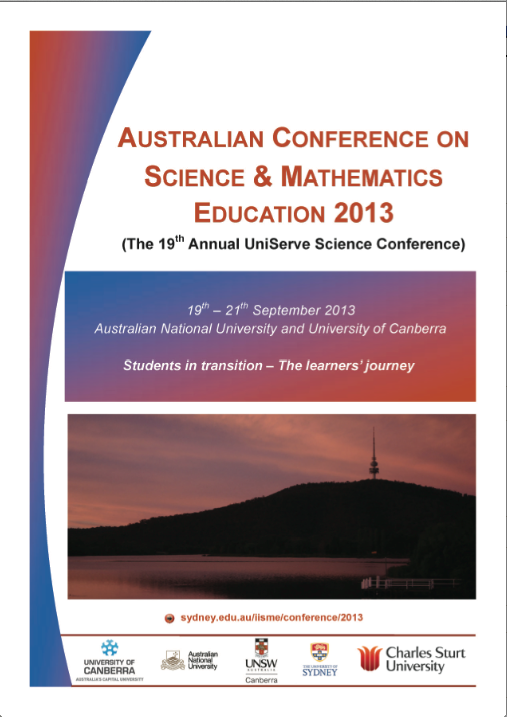The flat earth project: Motivating students to journey across transitions
Abstract
One of the key transition points in the journey of a science / applied science student is from school to first Year University. This transition can be especially difficult for those without senior school chemistry entering a degree programme requiring first year chemistry. Indeed, even those that do have the required background can have a hard time crossing this threshold due to embedded misconceptions or lack of understanding of the key underpinning concepts that first year study relies on1. This can cause students to disengage from study and lose the necessary motivation to complete the journey they embarked upon initially with such enthusiasm. The Flat Earth project was conceived to provide a platform to research student engagement and motivation while at the same time it invited the learner to question and test their grasp of key concepts, challenge and rebuild these when misconceptions were “self-discovered.” A chemistry concepts diagnostic tool being developed within a related OLT funded project5 and based on well-established concept inventories, was utilised to probe the level of understanding of our first year Chemistry students over five concept areas. Within the Flat Earth Project our classroom teaching strategy is a series of engaging and collaborative activities targeting the misconceptions revealed. In stage 1, these were trialled in a large lecture format (three concept areas) and in a workshop format (one concept area). We used demonstrations, model kits, simulations, and scenarios to stimulate discussion and debate. In the lecture theatre format, we presented as a team act and asked questions of and posed challenges to the students whereas in the workshop format this was driven by the students using an Inquiry-based learning tool. In both cases the pedagogical design ensured students worked through the concepts in groups with peer support to allow them to test their understanding, practice team work and gain experience in judging their peers’ grasp of concepts. This methodology is based on previous work by the authors in getting small groups of students to engage with key concepts via a collaborative team approach.2 Evaluation of this teaching design from the student viewpoint has been carried out using unfocussed group techniques3 and traditional surveying methods in order to capture student response in terms of motivation and engagement. These data are being used to redevelop and fine tune the activities and to look at recreating them in an online environment (stage 2). Preliminary analysis of commentary highlights two outcomes: (1) Students display a complex suite of motivations driving their engagement (or lack of). (2) Students appreciate the lecture theatre demonstrations and simulations with responsive running commentary as significantly helping to crystallise their thinking around the targeted concept area. In stage 2 of the Flat Earth Project, self-regulated online learning activities will be used to test a new set of concepts and provide interventions. Student response, motivation and engagement4 with the online activities with be compared with the face-to-face intervention approach. In addition the cost effectiveness of both approaches will be evaluated from the teacher and institution perspective. The project team were financially supported by the OLT project5.Downloads
Published
2013-09-23
Issue
Section
Abstracts
